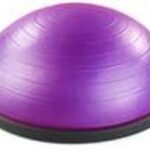Kids love to play. Unfortunately, once kids sign-up for organized sports, the play is eliminated; somehow, coaches believe fun and improvement are antonyms. Effective coaches use scrimmages to teach skills. These scrimmages may not be just like a regular game, but most kids do not care. They want to play. They want to play tag or dodge ball or almost anything where they can run around with some friends and have fun. Basketball drills are the antithesis of fun, yet a coach would be remiss if he never attempted to teach anything and simply allowed the players to do whatever they wanted. Using games is the happy medium between negligent basketball coach and bored players.
The following seven games can be used to teach or train basketball skills as varied as shot selection and creating a passing lane. Each is useful in skill development for youth players.
AMERICANIZED NETBALL
Americanized Net Ball features two basic rule changes:
1. No dribbling. The ball must advance with a pass.
2. No blocking an offensive player’s shot or stealing the ball from an offensive player. A defender may contest a shot or steal a pass, but it is a foul if the defender reaches or blocks, whether the reach or block is “all ball” or not.
Use this game to emphasize several skills important to continued progress.
1. Shooting. Because shots are taken close to the basket, young athletes shoot with better form. Young players develop bad habits by shooting outside shots too early, either in an attempt to show-off or to find an open shot. In a regular game, if a player stations himself eight feet from the basket in his range to shoot the ball, he is never going to be open. However, if he knows his shot will not be blocked, he attempts this shot rather than throwing the ball from twenty feet. The speed of execution is unimportant for young players; proper technique development is more important.
2. Passing and moving to get open. One great youth league problem is the abundance of dribbling without purpose, which results in eight players standing and watching. Without the dribble, players move to a passing lane. Also, because the defender cannot steal the ball, the offensive player with the ball does not hide, or “turtle” the ball in fear, but remains operational.
3. Position Defense. Too many players develop bad habits at a young age because they are bigger, stronger and faster than other kids, and they reach-in and take the ball or block every shot. But, when size and strength evens out, the reaching turns into fouls. Through normal games and competitive tournaments we reinforce the bad habits; even encourage the bad habits, which coaches and players later must break. By discouraging reaching, the emphasis is on active hands and feet, attempting to deflect a pass, which encourages good habits, while punishing bad habits (reaching).
SIXTY POINT GAME (Getting open, passing under pressure, denial defense)
Play begins with the offense in a spread, four corners with the point guard dribbling at the top and defensive players matched against all five offensive players. The offense tries to control the ball and score while the defense attempts to pressure the ball without fouling. The point guard can dribble to start, but after he passes the ball, there is no more dribbling allowed. A lay-up is 5 points, while a foul is 4 points; if the player is fouled while making a lay-up, the offense gets nine points. Each pass completed is worth one point and a turnover is minus two points. There are no screens, only cuts. After a foul, the ball starts again with the point guard dribbling. Possession changes on turnovers, but scoring is continuous.
FIFTY (Shot selection, passing, cutting)
The game is played five vs. five, full court. One point is awarded for every pass completed and five points for a made shot. Five points are subtracted for a missed shot and the score returns to zero if a player dribbles. The first team to reach fifty points wins.�
VOLLEYBALL PASSING (Protecting the ball, moving without the ball)
Two four-man teams play within the volleyball court lines between the 10-foot line and the end line. Teams must cut to get open and pivot to improve passing angles. Teams complete passes until one team reaches 100. On a turnover, the player committing the turnover must run out of bounds and do two push-ups, giving the new offensive team a brief man advantage. Counting is continuous, so teams pick up where they were when they last had the ball.
GAEL PASSING (Creating a passing lane, denial defense)
Game is played two vs. two. Offense starts with the ball and each player has one dribble every time they receive a pass. Offense must stay inside the three-point line. Offense attempts to complete passes while defense applies pressure. Any defensive deflection or touch results in a turnover. Game is played to seven.
3 vs. 3 w/NO DRIBBLE (Getting open, making good passes, using a screen to create a shot)
Three players start on offense with P1 inbounding the ball. Three players start on defense and guard their respective offensive players. Offense may not dribble. Offensive players must work to get open and advance the ball up court, while defenders work to steal the ball. Game is played to three baskets.
2 vs. 2 FULL COURT CUT THROAT (Open court ball handling, lay-ups, recovery on defense)
Divide team into four teams of two. Team that scores immediately picks up full court defense against team that was sitting out. Stress fundamental man-to-man defense. Help defender must be in help position and not locked to his/her man. Play to seven.
Reference:
- Alan Launder, Play Practice.

